4005 The Power Of Leverage: For Clients, Employees, Sales & Profits
Podcast: Play in new window | Download (Duration: 35:35 — 33.0MB)
Subscribe: Apple Podcasts | Spotify | RSS | More
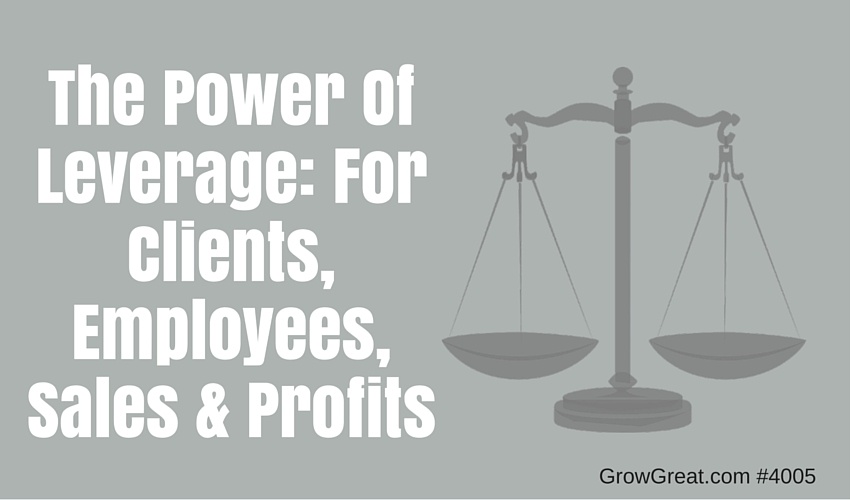
Today’s show as sparked by somebody desiring to start up a new enterprise and wondering what I thought about it. Talk turned to leverage and how to gain momentum, especially with a new venture. I don’t necessarily serve the start up niche, but it was a valid conversation any way.
It’s easier to put your back into it when you’ve got leverage on it. Whatever IT is.
Without leverage, putting your back into it will cause you to put your back out! Be careful.
Gladwell calls it “the tipping point.” Others call it by various things. Traction. Momentum. Being on a roll.
It’s mostly similar. It’s the ability to build on success. Sure, more is better, but not always necessary. And as with most things, a key phrase is in play.
It depends.
Is it easier to leverage substantial profits into more profits? Maybe. It depends. Sometimes the leverage becomes more difficult. If you set a record in profits last year, it may be tough to best it again this year. But maybe not. Again, it depends.
Leverage, like most things, isn’t a one-size-fits-all circumstance kinda of a deal. Even so, we’re foolish if we don’t closely examine the power of leverage in our careers, businesses or organizations.
I’ve headlined today’s show with four specific areas: a) clients or customers (those people who pay us for what we can do for them), b) employees, c) sales or revenues and d) profits.
They’re not really in a specific order except for that first one because unless you’ve got a customer (or many customers) you don’t have a business. Recently I’ve read a few blog posts on big time sites that list the most important things needed for a successful startup. It’s surprising how many don’t list customers!
You can have all the technological advantages known to man, the best people cranking out the work and whatever else you want – including tons of capital behind you – but if you don’t have people willing to pay you for what you offer, you’re out of business. Sometimes I laugh at the obvious advice offered in this world where everybody seems to be a teacher of success.
Last week I was listening to a podcast I’d never heard before. Somebody told me to check it out so I did by randomly picking an episode. A few minutes in the guy is extolling the virtues of an email list. He’s talking how powerful an email list is and how his list is worth a specific dollar amount every time he sends out a specific offer to sell something. It seemed like more bragging than anything else. I listened for a few more minutes before giving up on it. I’d heard this all before.
The way to make money online:
Step 1: Build your email list. The money is in the list.
Step 2: Sell something to your list.
Step 3: Watch the money roll in, even while you sleep.
It’s like so much other sage advice out there. Let me go ahead right now and tell you how to become a millionaire. Ready?
Step 1: Get a million dollars.
Step 2: Call yourself a millionaire.
Thank you. Thank you very much!
The hard part is step 1. That’s the step that’ll trip you up every time! 😀
I’m left always thinking, “Well, duh! Of course the money is in the list, but other than generic crapola, how do you do that?” Well, leverage isn’t some mumbo-jumbo fru-fru stuff. It’s real and it really works.
I’ll warn you upfront, the hard part is getting started. The hard part is step 1. No doubt. It’s a grind that can take a very long time.
Finding a paying customer isn’t easy. Yes, it depends on what you’re selling and to whom, but it’s never easy. And if it is easy, then it’s not lucrative. The only thing easy about it the concept of it all. Supply and demand. Pretty simple stuff really, in theory.
Take GOLD. Do you ever watch the Discovery TV show, Gold Rush? Gold isn’t easy to find. Well, other than going to the mall jewelry store. But if you’re trying to find raw gold where you can make some money, prepare to sweat and cuss. The demand is high, but the supply is limited. That’s why gold is currently selling for $821.50 per troy ounce. Supply is limited because it’s brutal work to extract gold from acres and acres of dirt. Customers are easy. Getting the inventory – the thing you need to sell (in this case, gold) – that’s crazy hard.
I got a spammer’s email the other day that I happened to open because it got through my filter. The guy was selling some online course about how to kill it with your own Amazon store. His pitch was that he could teach you how to set up a super profitable Amazon store where you could make money while you sleep. These people either sleep a lot or they’re obsessed with earning money whilst sleeping. At any rate, he talked about how his course would teach you where to buy inventory that people desperately want. Yes, they’re desperate for this merchandise. Hello, supply and demand. If everybody can buy the same merchandise to sell and then post it at Amazon in their own Amazon store, then supply is open. Demand is sure to be low, along with any potential money to be earned. No go!
Leverage is important because first we have to create and establish VALUE. Value is low when supply is abundant. Supply is abundant when it’s easy. Easy isn’t the ideal way to make money. It takes deep pockets, scope and scale to make money in easy or abundant. Think Wal-Mart or Amazon. Think of your local grocery store chain. They operate on razor thin margins because supply isn’t much of an issue. Having what you want to buy, when you want to buy it, at the lowest possible price to keep you coming back week after week – that’s the game. It’s more of a system or process thing driven by technology than anything else.
But you don’t have deep pockets, not like Wal-Mart or Amazon. You need to leverage a fifth thing – your capital or resources. You need the strongest return-on-investment (ROI) you can get. But again, first, you need customers.
Today, I just want to focus on getting to first base in all of these: clients, employees, sales and profits.
Get your first client. Don’t worry about getting anybody else. Worry about and strategize on ways to get your first customer! Do whatever you need to do to get somebody willing to say YES. Make a sale. Head up (or down, whichever you prefer) and get a customer. Find somebody who thinks you’ve got exactly what they need.
I’m not saying give it away. Free samples are valid. A free taste. I do that with coaching so people can test drive me before they write me a check. The sole purpose is to convert them into a client though. My intention is to be so dazzling and high value that they’ll be compelled to say, “Okay, this is awesome. I want to hire you.” From one free session I hope to gain a client for 6 months or a year. It legit because I’m not cheap, but I am high value. I think people deserve to get a sense of my work before they engage me. Not everybody needs it, but some do. So I’m cool with making the offer even if it costs me some time and results in no sale! Those are risks I’m willing to make because I’m leveraging my time. More importantly, I’m leveraging my experience, expertise and skill. I’m giving people a taste of it so they can better know me. It results in trust and usually results in a mutual discovery that this dog will hunt.
You’ll be tempted to think if you can sell one, you can sell two. Maybe. Maybe not. It depends. Was your mom your first sale? See, that skews things dramatically.
But there is a number you can leverage. I don’t know where it is. You likely don’t know either until you start moving. It’s like obscenity. You’ll know it when you see it.
That’s why you often hear the phrase, “The rich get richer.” It’s true. They do. Because money is a wonderful leverage tool. During the recent recession I knew business men who took advantage of the real estate crash because they had a resource others didn’t have. MONEY. CASH MONEY. They were able to move in with their cash and leverage it into assets worth a lot more because people were desperate for their resource. People had real estate, but needed money. Now that real estate prices are up double digits, those investments are worth far more than these guys paid. The power of leverage.
Companies do the same thing with employees. Look at the top employers based on employee feedback. Why do they attract the best talent? Because they got it started. Again, the key is to get it going. If your company sucks at recruiting or retaining top talent, nothing will change until you make that a focal point. First, you’ve got to figure out what you need to change to attract the talent you most want. Next, you’ve got to change things so you become what and who you need to be to get such people. Then, you have to go find your first rock star employee. Leverage that employee to find your second rock star employee.
The University of Alabama football team has won the national championship 4 out of the last 7 years. They’ve been able to leverage recruiting some of the best football players in the country because good players (rock stars) want to hang with and perform with other good players. Like football players, there are plenty of talented people to go around. You can get rock stars if you want them. But you have to get your first one or all bets are off.
Sales is coupled with clients. You can’t have one without the other. Well, you can if you’re a non-profit I guess, but we’re not talking about that. For our purposes, a client or customer is somebody willing to pay you money for your product or service. Sales are different because you might sell one client something for $100 and another customer might buy something for $1000. That’s two different levels of leverage. Maybe. It depends.
You figure the $1000 sale might be more likely to leverage into another $1000 sale. It could be. And you should try. Leveraging sales is like visiting a busy restaurant versus one that’s empty. People want to do business with somebody others find valuable. Especially if we’re unsure or the business is an unknown to us. That’s why referrals and recommendations are important.
Higher sales drive sales higher. Or they can. But again, let’s concentrate on the first sale. Maybe it’s our first $100 sale. But it could be our first $1000 sale. Or our first $10,000 sale. Get the first one. Again, slog it out, grind it out, put in the work. You have to get one before you can get any hope of leverage.
Ditto for profits. They work much like sales, but they’re harder. Well, in some ways. Nearly everybody I know complains about profit margins eroding. If sales are going well, profits are always at risk. Or so it seems. There’s always pressure on profits, driven in part by competition. Name the industry and give me Google and within seconds I’ll find the bottom feeder of that industry – the outfit who seemingly is unconcerned about making any money!
Here’s the real bottom line with leverage: you have to have something to get something. You can’t leverage NOTHING.
For those of you with growing businesses though, there are lessons to be learned. It’s more common than you’d think to forget the power of leverage or to assume that leverage is on auto-pilot. Don’t neglect your leverage. Do so at your own peril. I’ve seen it happen. We get on a roll and assume we can keep this roll going. Until it doesn’t keep going. All of a sudden we hit a pot hole we never saw coming and BAM! Momentum (and leverage) are stopped dead in their tracks.
It happens when a company tries to cut their way to success. Good luck with that strategy. They never thought they’d be bleeding, but here they are with blood spilling out everywhere.
Like a skilled Judo opponent, sometimes our own body weight can be used against us. Leverage that we once had now belongs to our competitor, or the market. We’ve lost it and it can be a demon to get back!
But that’s the job – to find the leverage again (or for the first time).
Turnaround artists are skillful at this. It’s a special skill set some have. They can enter a business that has lost momentum and leverage, and with a bit of time and some resources they can put their back into it and get it back. They look carefully at the operation and dissect what’s really happening to see where to marshall the resources so they can get the thing back on its feet.
Get one. Your first one. Then get another one. And another one. Use the first to get the second. Then use the first two to get the third. Use the first 3 to get the second 3 and you’ve doubled. That’s leverage.
It’s the wise use of resources and the readiness to use them. It’s courage, tenacity and determination. Honestly, it’s not much else except maybe discipline! Sure, know how helps, but it’s not nearly as important as the other aspects.
Look at where you are right now. Wherever that is, however good or bad – see it for what it really is. We’ve all got things we can leverage to help us grow great, or greater. It can be hard to see when we’re staring down a problem though. The mountain looks daunting to climb when you’re standing at the base. So start climbing. Grab the first hand hold. Plant your foot on the first ledge or inside the first crevice. Now, look for the next move. The very next move. Using one step to find your next step is leverage.
Here’s the thing. Until you grab hold of something there’s no leverage. Until you get off the ground and onto the mountain, no leverage. I know it sounds obvious, and it really is. But I also know how obvious escapes the smartest among us. We’re so busy chasing our tails and putting out fires, it can be hard. Or, we can forget about it. Sometimes we just grow too complacent and over time some failures seem to illustrate our false belief that we’re just not one of the lucky ones. Truth is, we’re neglecting to do the work to leverage success into greater success, or to even leverage our failure away from more failure…and toward more success!
So today, get off your butt. Go get one win. Big, small or anything in between. Then get another one. Success is a habit and we could all use better habits.

Subscribe to the podcast
 To subscribe, please use the links below:
To subscribe, please use the links below:
- Click Here to Subscribe via iTunes
- Click Here to Subscribe via RSS (non-iTunes feed)
- Click Here to Subscribe via Stitcher
If you have a chance, please leave me an honest rating and review on iTunes by clicking Review on iTunes. It’ll help the show rank better in iTunes.
Thank you!
4005 The Power Of Leverage: For Clients, Employees, Sales & Profits Read More »

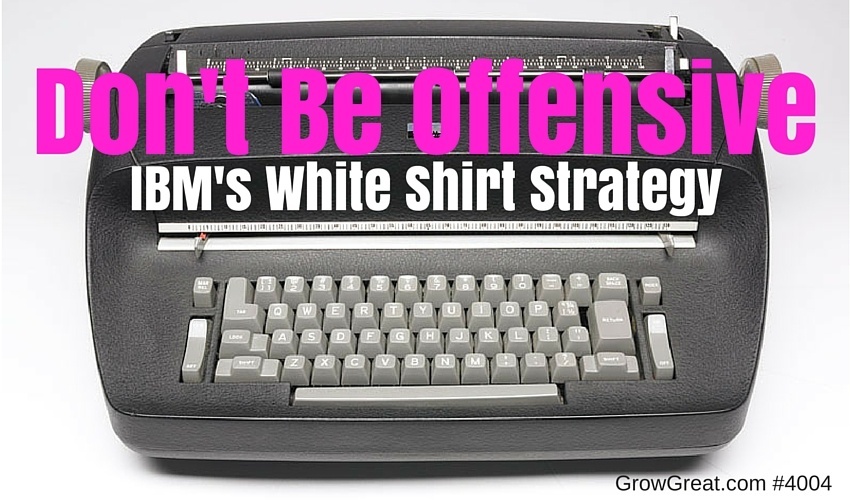

 I hate button down collared shirts worn with a tie. It’s a personal preference thing. They look rumpled and awful. I’m not offended by them, but it’s not an attractive look to me. Whenever I see a guy wearing it, it bugs me. Would I refuse to buy from such a person? I might. I might not. There would probably be other elements involved.
I hate button down collared shirts worn with a tie. It’s a personal preference thing. They look rumpled and awful. I’m not offended by them, but it’s not an attractive look to me. Whenever I see a guy wearing it, it bugs me. Would I refuse to buy from such a person? I might. I might not. There would probably be other elements involved.

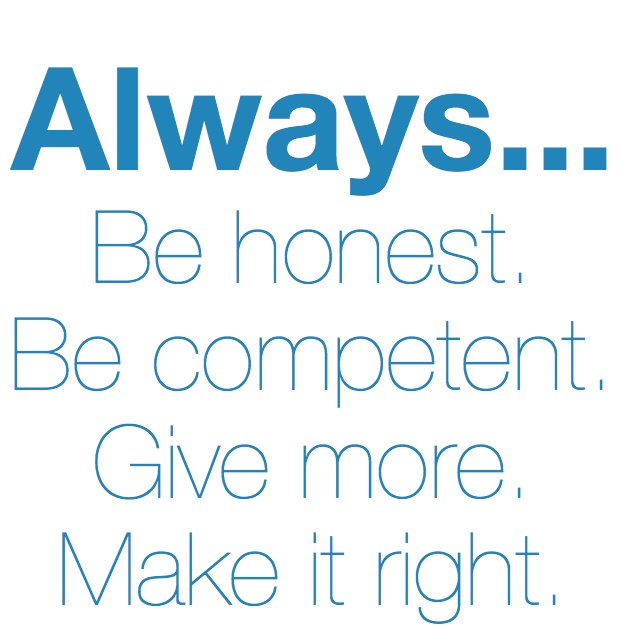

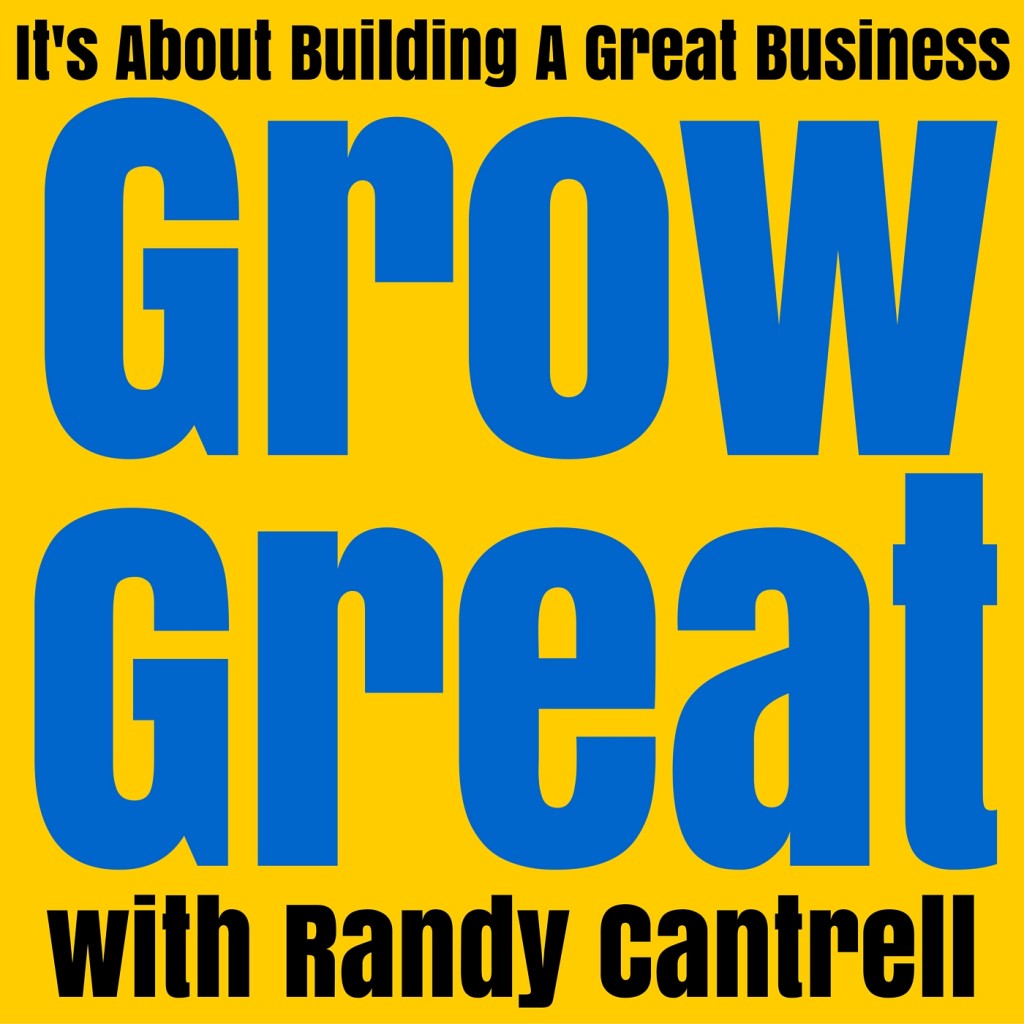

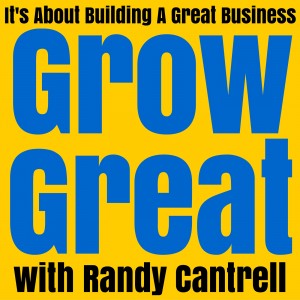 One big change is the podcast. The name. The focus. Even the format.
One big change is the podcast. The name. The focus. Even the format.
 Knowledge makes everything simpler. That doesn’t mean it makes things easy.
Knowledge makes everything simpler. That doesn’t mean it makes things easy.



